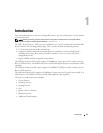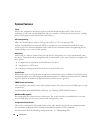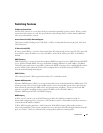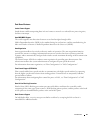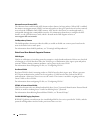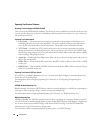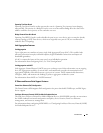
Introduction 23
Switching Features
IPv6 Access Control Lists
An IPv6 ACL consists of a set of rules which are matched sequentially against a packet. When a packet
meets the match criteria of a rule, the specified rule action (Permit/Deny) is taken and the additional
rules are not checked for a match.
Access Control List (ACL) Outbound Support
This feature enables binding an ACL (IP, MAC, or IPv6) in outbound direction on physical, LAG, and
VLAN interfaces.
IP Source Guard (IPSG)
IP source guard (IPSG) is a security feature that filters IP packets based on the source ID. The source ID
may either be source IP address or a source IP address source MAC address pair. IPSG is disabled by
default.
DHCP Snooping
DHCP Snooping is a security feature that monitors DHCP messages between a DHCP client and DHCP
server. It filters harmful DHCP messages and builds a bindings database of (MAC address, IP address,
VLAN ID, port) tuples that are specified as authorized. DHCP snooping can be enabled globally and on
specific VLANs. Ports within the VLAN can be configured to be trusted or untrusted. DHCP servers
must be reached through trusted ports.
DHCP L2 Relay
This feature permits L3 Relay agent functionality in L2 switched networks.
Dynamic ARP Inspection
Dynamic ARP Inspection (DAI) is a security feature that rejects invalid and malicious ARP packets. The
feature prevents a class of man-in-the-middle attacks, where an unfriendly station intercepts traffic for
other stations by poisoning the ARP caches of its unsuspecting neighbors. The miscreant sends ARP
requests or responses mapping another station's IP address to its own MAC address.
Dynamic ARP Inspection relies on DHCP Snooping.
MLD Snooping
In IPv4, Layer 2 switches can use IGMP Snooping to limit the flooding of multicast traffic by
dynamically configuring Layer 2 interfaces so that multicast traffic is forwarded to only those interfaces
associated with IP multicast address.
In IPv6, MLD snooping performs a similar function. With MLD snooping, IPv6 multicast data is
selectively forwarded to a list of ports intended to receive the data (instead of being flooded to all of the
ports in a VLAN). This list is constructed by snooping IPv6 multicast control packets.







